Climate scientists hope this new mapping tool helps drive the point home
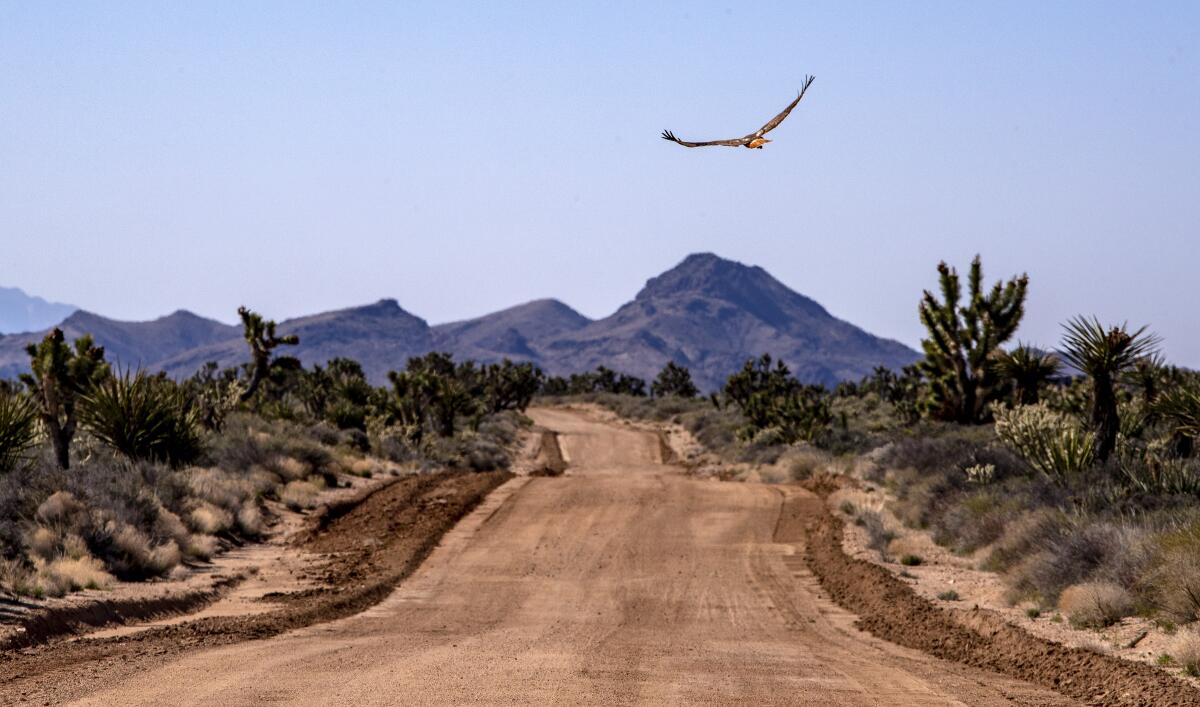
- Share via
Good morning. It’s Monday, Aug. 5. Here’s what you need to know to start your day.
- Climate scientists hope a new mapping tool could help drive the point home.
- The Golden State’s COVID surge is stronger and longer-lasting than expected.
- Meet the Riverside man on a mission to save California’s abandoned ducks, geese and chickens.
- And here’s today’s e-newspaper.
You're reading the Essential California newsletter
Our reporters guide you through our biggest news, features and recommendations every morning
You may occasionally receive promotional content from the Los Angeles Times.
Mapping your town’s possible climate future
The consequences of climate change are right there in the name.
But despite the ever-growing scientific evidence, the ongoing media coverage (from The Times and elsewhere) and an international treaty aimed at mitigating its effects, the scope of the crisis can be difficult to fathom on a personal level.
Researchers at the University of Maryland Center for Environmental Science created a mapping tool they hope will bring the point home for people by allowing them to see how their local climate is projected to change in 60 years — and which city or region mirrors those conditions right now.
The new tool was built using modeling from the Intergovernmental Panel on Climate Change and other research groups and presents its findings under two scenarios: high emissions, a future in which we failed to meaningfully cut emissions and mostly let global warming continue unabated; or reduced emissions, which assumes we collectively took meaningful action to curb emissions, though still shy of the goals of the Paris climate agreement.
Much of Southern California would trade its celebrated Mediterranean climate for more of a desert environment, according to researchers, who project that, if we fail at meaningful action, by 2080:
- Los Angeles will have an overall climate similar to what’s presently experienced in Rialto, a city in southwestern San Bernardino County;
- San Diego’s climate will be more akin to Vicente Guerrero, in Baja California, Mexico;
- Sacramento will feel like Garnet, near Palm Springs in Riverside County;
- Redding could feel more like Fountain Hills, a town about 30 miles northeast of Phoenix.
Many cities and regions across the state can expect hotter summers and warmer winters. For instance, a typical summer in Long Beach will be 7.7 degrees hotter, and winters will be 5.6 degrees warmer. People living in San Jose will experience summer temperatures nearly 10 degrees higher and the climate will feel more like present-day Redlands.
“It’s not only the temperature that will change,” Times environment reporter Hayley Smith wrote. “The map lays out how precipitation could shift, with many parts of California expected to see wetter summers and winters in addition to warmer ones.”

But experts warn that wetter summers don’t mean less drought. Drought could actually become more common because hotter conditions dry out soil faster.
And researchers say it wouldn’t just be the same world but warmer. The crisis would compromise food supplies and lead to more international competition for resources. It’s projected that economic development would stagger, followed by a cascade of impacts to education, technological development and more.
Under the more optimistic scenario that we manage to reach net zero emissions around 2050, average temperatures would still rise but notably less than the worst-case scenario. Even so, our climate is expected to shift.
On the map, that rosier outlook projects that Los Angeles’ climate would be similar to that of Castaic in 60 years, a community just north of Santa Clarita, with temperatures averaging 2.6 degrees warmer in summer and 1.4 degrees in winter.
Matt Fitzpatrick, a professor of global change ecology who created the mapping tool, told Hayley the map is a “really interesting way to communicate to people the magnitude of climate change that we’re expecting.”
That communication faces some challenges. Survey data from Pew Research Center last year suggest Americans’ confidence in climate science has fallen.
According to its survey, just under a third of Americans think climate scientists understand very well whether climate change is happening, down from 37% in a 2021 survey. And 47% of those asked believe climate scientists don’t have a good understanding of the best ways to address climate change.
There’s a clear partisan divide too, with Democrats rating climate scientists’ understanding far higher than the marks given by Republicans.
Climate scientists keep sounding the alarm, despite those clear divisions. And belief may be one important aspect of the challenges scientists face, but persuading individuals and governments to take meaningful action could be the harder sell.
“The longer we wait, the harder it is to address this problem, but it’s not hopeless. There’s still plenty that we can do to try to avoid the worst effects,” Fitzpatrick told Hayley. “[But] we’re performing a giant experiment on our planet right now, and things could get really bad. Scientists could be just as easily under-predicting the outcomes [as] they could be over-predicting.”
You can read Hayley’s full story here and explore the mapping tool for yourself.
Today’s top stories
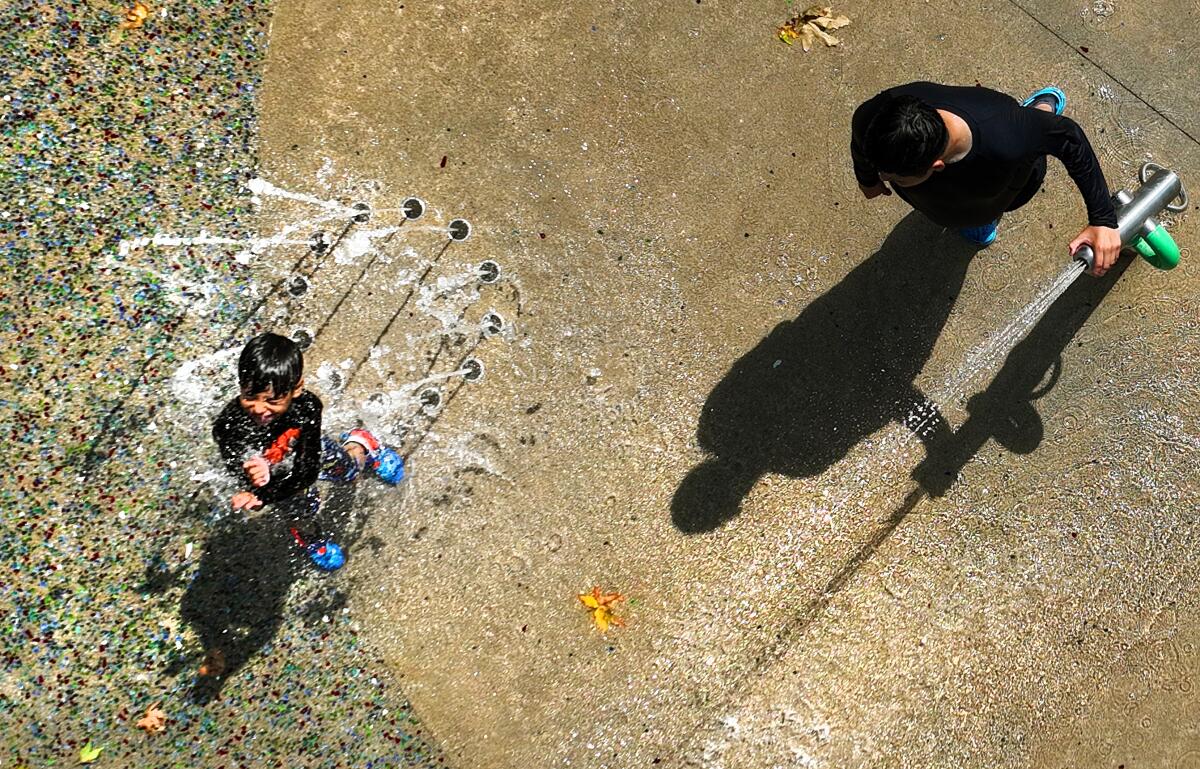
Another heat wave
- Another heat wave is on tap for Southern California and is expected to bring triple-digit temperatures across L.A. County.
- In response to the incoming heat wave, L.A. city and county are opening cooling centers across the region.
Fires
- California history was reduced to ash with the Borel fire’s destruction of Havilah.
- A family lost its home in the Park fire, years after relocating from Paradise
The COVID surge
- The Golden State’s COVID surge is stronger and longer-lasting than expected.
- Now, nobody expects the spike to ease anytime soon.
Hollywood production collapse
- The reality TV bubble finally burst.
- Film at TV workers are leaving L.A.
- The slowdown has taken a mental health toll. ‘It wears on me’
Crime, justice and courts
- L.A. County supervisors have signaled a shift on the Men’s Central Jail closure plan. The board now seems to be rethinking its no-new-jails goal.
- After half a century of grievances, veterans’ housing demands on the West L.A. VA campus are set for trial.
- A man was found fatally shot at the scene of single-car crash in South L.A.
- Los Angeles police released images and other details of suspects in the fatal shooting of “General Hospital” actor Johnny Wactor.
More big stories
- Residents across the Westside picked up bad vibrations from a techno music festival in Inglewood, sparking widespread complaints about disruptive music and rumbling bass.
- Should we shake, rattle and ... roll the dice without earthquake insurance?
- At the annual CatCon in Pasadena, some pounced at JD Vance over his “childless cat ladies” remark.
Get unlimited access to the Los Angeles Times. Subscribe here.
Commentary and opinions
- Robin Abcarian: Finding community, laughter and emotional support chickens at a knitting store in Inglewood.
- Jackie Calmes: Reports of the death of Trump’s Project 2025 are greatly exaggerated.
- LZ Granderson: Questioning whether Harris is Black? Trump is desperate.
- Guest opinion: When it comes to the U.S.-Mexico border, can people think beyond politics?
- Times Editorial Board: How to end SoCal’s smog streak? Slash pollution from railways and ports.
Today’s great reads
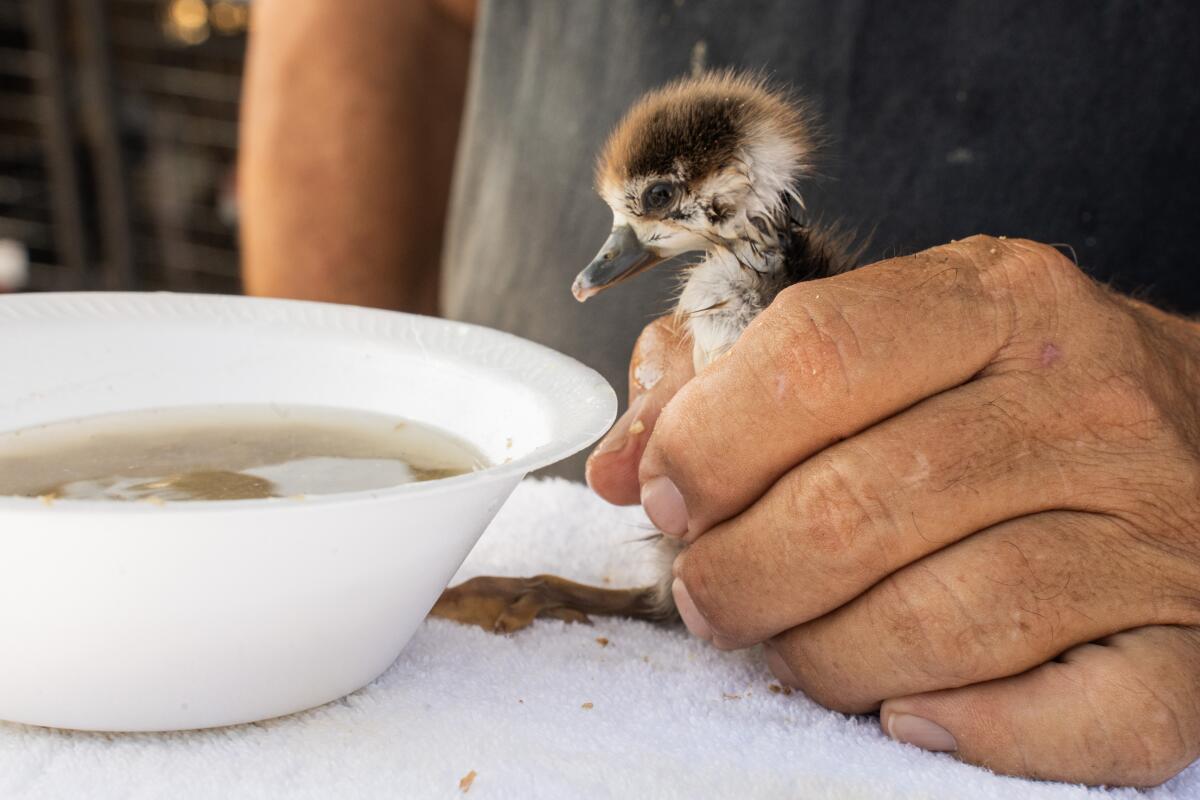
This Riverside County man is on a mission to save California’s abandoned ducks, geese and chickens. Howard Berkowitz has sacrificed his marriage, his job and, soon, his house to continue his quest. “Birds are completely different,” Berkowitz told Times reporting fellow Jireh Deng. “When they bond with a human, you actually become part of their flock.”
More great reads
- How to accept being ‘a fat person’ and quiet your inner critic
How can we make this newsletter more useful? Send comments to essentialcalifornia@latimes.com.
For your downtime
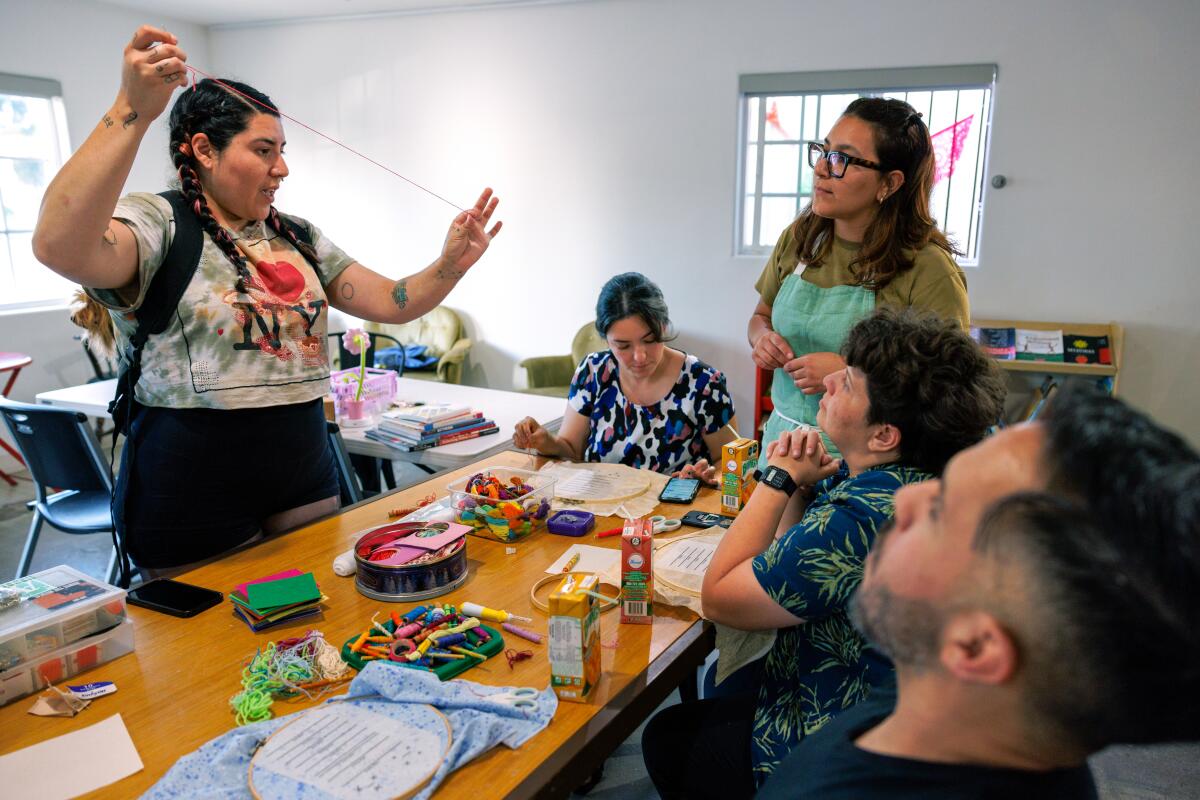
Going out
- 🪡 For $5, the Radical Sewing Club teaches you to mend clothes like an anti-capitalist.
- 👜 Here are nine drops, pop-ups and inspiring events to look out for in August.
Staying in
- 📺 A new documentary about Elizabeth Taylor reveals an intimate portrait of the Hollywood legend, writes Times critic Robert Lloyd.
- 🧑🍳 Here’s a recipe for an easy buttered pasta that will save dinner.
- ✏️ Get our free daily crossword puzzle, sudoku, word search and arcade games.
And finally ... a great photo
Show us your favorite place in California! We’re running low on submissions. Send us photos that scream California and we may feature them in an edition of Essential California.
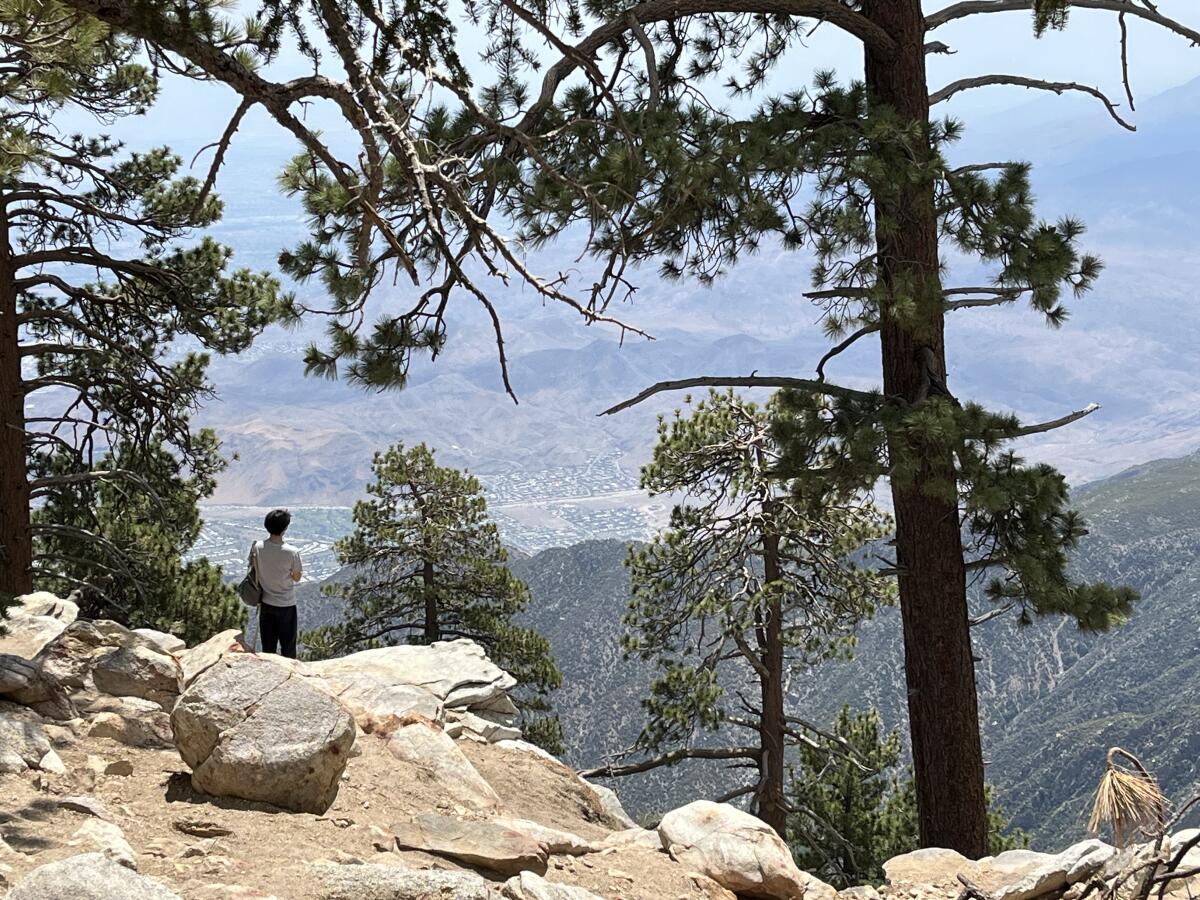
Today’s great photo is from Patty Loo of Redlands: Mt. San Jacinto State Park, preferably reached via an aerial tram from the desert floor.
Patty writes: “Where else can go from the desert to an alpine forest in 10 minutes? Via the Palm Springs tramway you go from an elevation of 600 feet to 8,516 feet and experience a temperature change of 30 to 40 degrees. It’s great as an escape from the heat of summer, and in winter a fun day in the snow for the whole family.”
Have a great day, from the Essential California team
Ryan Fonseca, reporter
Amy Hubbard, deputy editor, Fast Break
Check our top stories, topics and the latest articles on latimes.com.
Sign up for Essential California
The most important California stories and recommendations in your inbox every morning.
You may occasionally receive promotional content from the Los Angeles Times.




